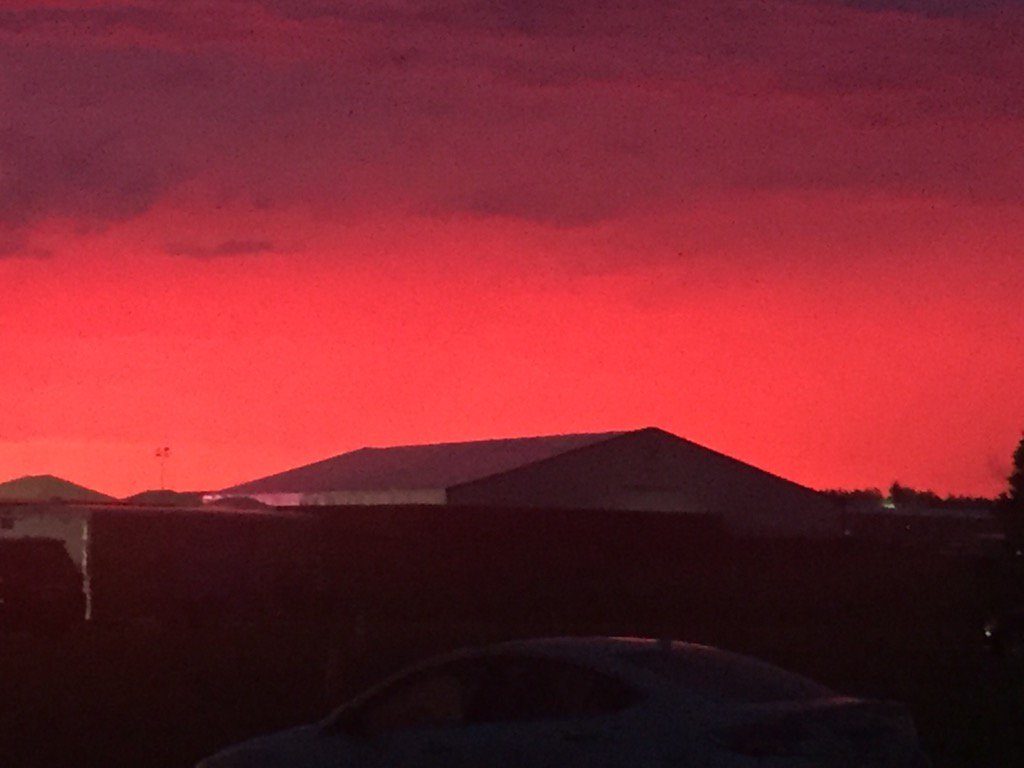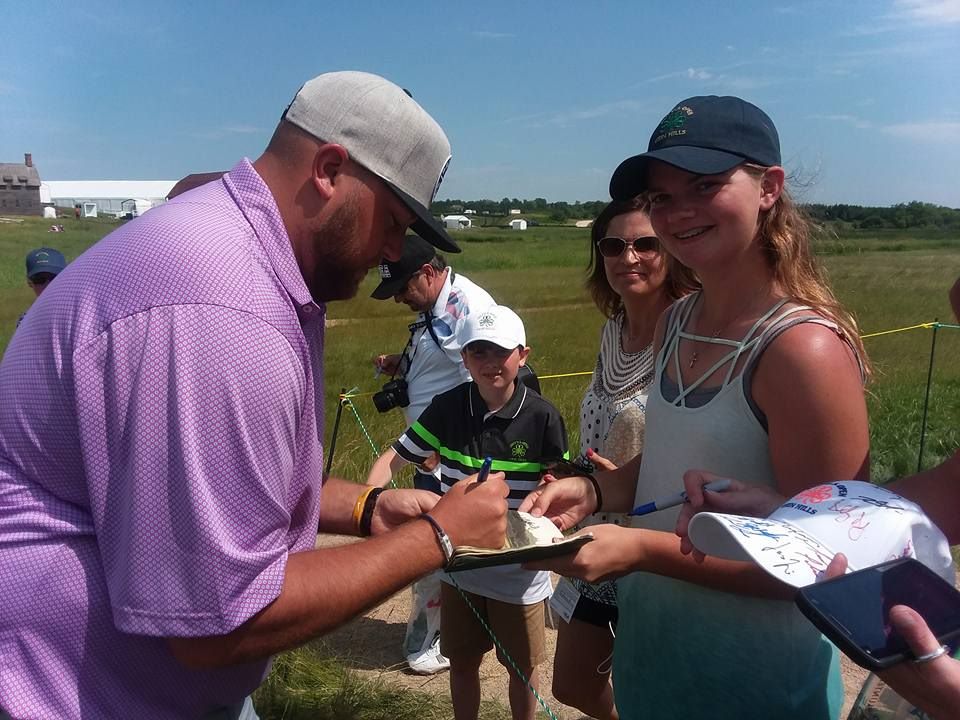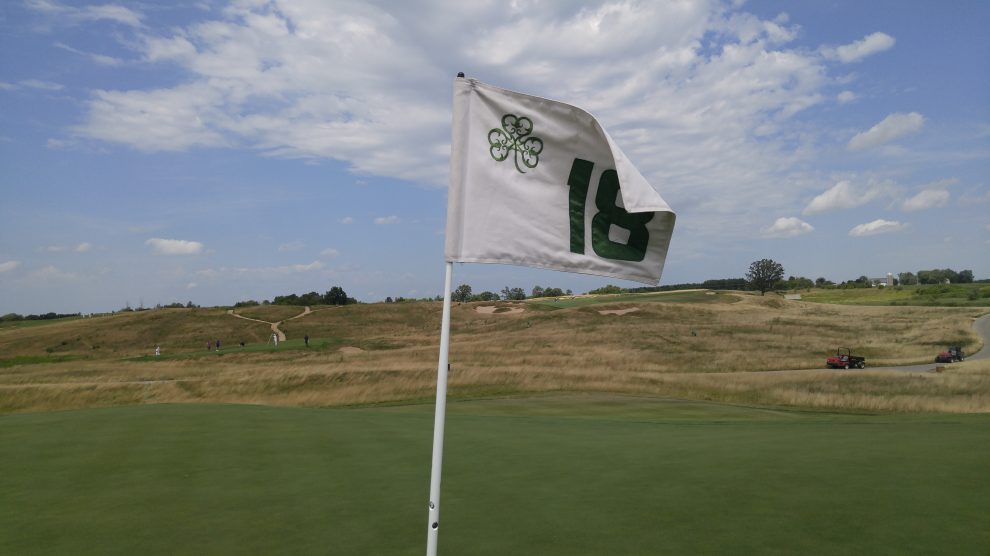ERIN, Wis. – A blood-red sunset bathed Erin Hills Golf Course in an eerie witch-light as the sun descended behind a ominous curtain of black clouds. One last feeble flicker of the dying rays extinguished dismally, and then the landscape plunged into darkness, illuminated only by angry streaks of lightning, each strike silhouetting the clubhouse against the surrounding moors, each thunderclap booming across the countryside. The clouds roiled like steam from a witch’s cauldron, while the wind rose octaves in volume to a bone-chilling banshee shriek.
It felt more like “The Hound of the Baskervilles” than golf’s national championship. The storm’s fury was so Olympic, people as far away as Appleton – two hours north - lost power and don’t look to be reconnected until next Thursday.
“If you think that was scary, you should try playing the golf course,” said one spectator, a bogey golfer who is a regular at Erin Hills. “I’ve bee playing this course for five years, and I’ve still never broken 95.”

He’s both right and wrong: Erin Hills is tough on amateurs. Even from “the right set of tees,” the trench bunkers are daunting to a 10 or higher handicap, and the wild fairway contours send golf balls scurrying and scores soaring. But for once at a U.S. Open, the contestants – apart from Kevin Na, this week’s obligatory set-up whiner – for once, the contestants are licking their chops. Birdie opportunities abound especially for longer hitters, and, despite the wild terrain and penal fescue, the wide fairways and smooth greens have players swinging for the fences.
“First of all, it’s a par-72, with four par 5s,” observed Lee Westwood. “You can take out the driver, and if you hit it long and straight, you’ll hit a lot of greens and have some birdie looks. You have to be careful, though. It sets up strangely to your eye. It’s hard to judge off the tee, so picking the right lines is critical.”
He’s right about that. There are several holes where the tee shot is, essentially, blind.
“Your line is that scoreboard off in the distance,” said one rules official to Matt “Soupy” Campbell, the young mini-tour golfer who has the distinction of being the last player to make in into the field. First he won a 4-for-1 playoff at local qualifying; then he won a 2-for-1 playoff at sectional qualifying at Canoe Brook. Campbell nodded, took out driver on the 460-yard par-4 11th and flat-out murdered the drive. Then he hit a gap wedge to a foot.
So much for those blind tee shots intimidating golfers.
And that was nothing compared to what Campbell did the day prior. Playing the short par-4 15th he just missed driving the green. He actually got Jordan Spieth's and Justin Thomas’ attention; he hit into them.

“There’s so much width out here you will see more fairways hit than at past U.S. Opens,” added 2009 Open Championship winner Stewart Cink. “The penalty is stiff if you hit it in the fescue, but the fairways are 50 yards wide, so if you hit it in the fescue, you deserve a penalty.”
The penalty will be severe. Kevin Na became Public Enemy Number One this week when he posted a video to Instagram showing everyone how long and thick the fescue is. Wailing plaintively, Na slashed several times at a ball he dropped in the rough, then he gave up that effort altogether, claiming he lost the ball. The Twitterverse was not sympathetic. One irreverent wag joked that the video swings had to be the fastest Na’s ever hit a golf ball in his life.
It just goes to show: Think before you hit Send.
“Someone who has control of his golf ball off the tee will have plenty of opportunities to make birdies, given the conditions we’re expecting,” explained 2015 U.S. Open champion Jordan Spieth. “I don’t see par winning the tournament. I see close to 5-to-10 under.”
Spieth’s comment about “the conditions we’re expecting” is the determining factor, however. If the wind blows and the rain soaks the course, this will be a much longer, tougher golf course. If we get the typical prevailing wind, many holes will play longer than their length on the card. And if a crosswind blows, those 50-yard wide fairways will seem much narrower.
“With no wind, you can get close to the green on holes like two and 15, the short par 4s, but if the wind blows, you’ll have to be much more conservative,” observed rising star Jon Rahm. “No. 14 is a great example. If the put the tees up and there’s no wind, if I hit a good drive, it might be reachable for me.”
Even the amateurs and qualifiers are upbeat about their chances this week. Campbell hit every fairway but one in his back-nine practice round Tuesday and made nearly every putt he looked at on both the practice green and the course. He was every bit as long as his playing partners, 2009 U.S. Open champion Lucas Glover and 2011 FedEx Cup champion Bill Haas. He has an unflappable demeanor, exactly the kind you need to compete in the white hot crucible of a U.S. Open.
PGA Tour pro Xander Schauffele was equally optimistic.
“You can absolutely attack this golf course at the par 5s and both of the driveable par 4s as long as you are in the fairway,” he surmised. "The 500-yard par 4s are another story, but there’s definitely more chances for birdie here than at other U.S Open courses.”
So as the sun sets once again upon golf’s Baskerville Hall and its haunted moors, the scene is far more pacific. Bright sunshine followed the storm and the players outlooks are just as sunny.
“I fell really good about this week,” Westwood concluded.
And with Erin being so reminiscent of his beloved England, how could he not?

